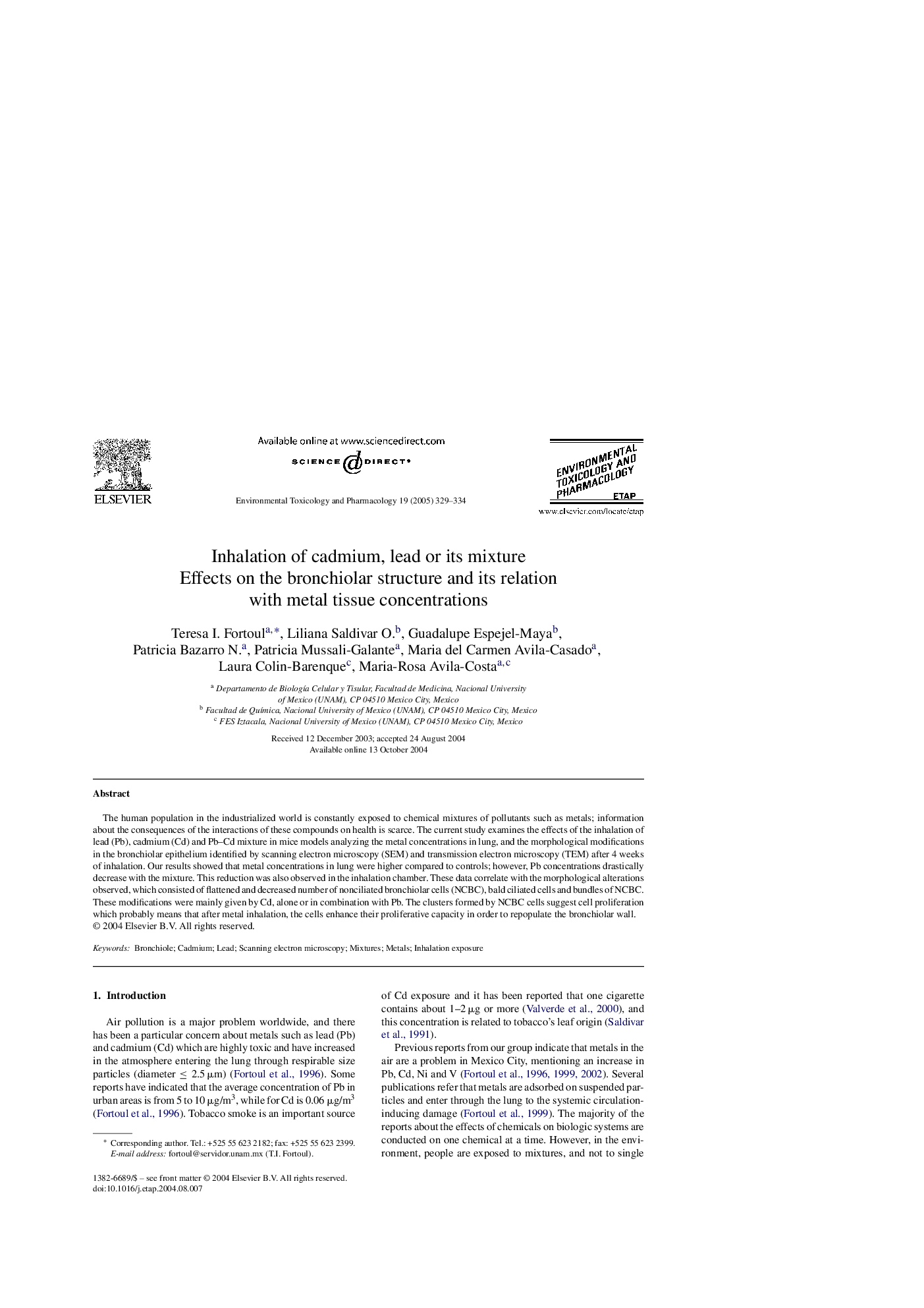| Article ID | Journal | Published Year | Pages | File Type |
|---|---|---|---|---|
| 9030178 | Environmental Toxicology and Pharmacology | 2005 | 6 Pages |
Abstract
The human population in the industrialized world is constantly exposed to chemical mixtures of pollutants such as metals; information about the consequences of the interactions of these compounds on health is scarce. The current study examines the effects of the inhalation of lead (Pb), cadmium (Cd) and Pb-Cd mixture in mice models analyzing the metal concentrations in lung, and the morphological modifications in the bronchiolar epithelium identified by scanning electron microscopy (SEM) and transmission electron microscopy (TEM) after 4 weeks of inhalation. Our results showed that metal concentrations in lung were higher compared to controls; however, Pb concentrations drastically decrease with the mixture. This reduction was also observed in the inhalation chamber. These data correlate with the morphological alterations observed, which consisted of flattened and decreased number of nonciliated bronchiolar cells (NCBC), bald ciliated cells and bundles of NCBC. These modifications were mainly given by Cd, alone or in combination with Pb. The clusters formed by NCBC cells suggest cell proliferation which probably means that after metal inhalation, the cells enhance their proliferative capacity in order to repopulate the bronchiolar wall.
Related Topics
Life Sciences
Environmental Science
Health, Toxicology and Mutagenesis
Authors
Teresa I. Fortoul, Liliana Saldivar O., Guadalupe Espejel-Maya, Patricia Bazarro N., Patricia Mussali-Galante, Maria del Carmen Avila-Casado, Laura Colin-Barenque, Maria-Rosa Avila-Costa,
